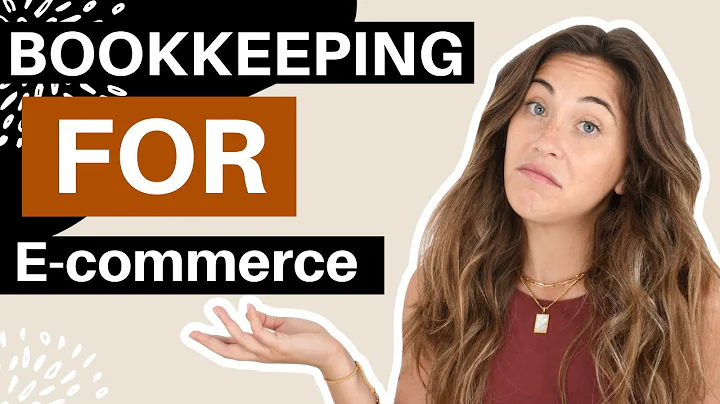Shopify vs Squarespace: Pros, Cons and Key Features
Table of Contents
Introduction
- Shopify vs Squarespace: Which is the Best Platform for Your Online Store?
6 Key Reasons to Use Shopify Over Squarespace
- Shopify lets you sell in more ways
- Shopify is better for selling internationally
- Shopify works with more payment gateways than Squarespace
- Abandoned cart saving is included on all Shopify plans
- Shopify’s automatic tax calculation features are stronger
- Shopify’s customer support is more comprehensive
6 Key Reasons to Use Squarespace Over Shopify
- Squarespace gives you a much wider range of free templates
- Squarespace is easier to use
- Squarespace gives you more website building features
- The product option limits are more generous in Squarespace
- Product images are handled better by Squarespace
- Squarespace’s built-in email marketing tool is more sophisticated than Shopify’s
Conclusion
- Which Platform is Right for You?
- Shopify vs Squarespace: Pros and Cons
- Frequently Asked Questions (FAQs)
Shopify vs Squarespace: Which is the Best Platform for Your Online Store?
If you're looking to build an online store, you've probably come across Shopify and Squarespace. Both platforms are popular website builders that offer ecommerce functionality, but which one is right for you? In this article, we'll compare Shopify and Squarespace and help you decide which platform is the best fit for your business.
6 Key Reasons to Use Shopify Over Squarespace
- Shopify lets you sell in more ways
Shopify was designed specifically to be an ecommerce platform, which means that its selling tools are much more flexible than the Squarespace equivalents. This is particularly true when it comes to point of sale features. Thanks to a wide range of POS hardware, Shopify gives you a convenient way to take payments not just online but in physical locations too, all while keeping your online and offline sales data perfectly in sync. By contrast, Squarespace’s point of sale features are currently very basic and only work in the US.
Additionally, you can use Shopify’s ‘buy buttons’ to embed your products on other websites. This helps you further extend the reach of your catalogue and generate more sales. Squarespace doesn’t yet have a similar feature.
- Shopify is better for selling internationally
Unlike Squarespace, Shopify lets you sell in multiple currencies, which means that your store’s visitors can see product prices in their own currency. And, thanks to its sophisticated multilingual features, Shopify makes it much easier than Squarespace to create different language versions of your store.
- Shopify works with more payment gateways than Squarespace
Payment gateways are software applications that process credit card payments on your website. Shopify lets you use far more of them than Squarespace — you can integrate over 100 payment gateways with Shopify, while Squarespace limits you to just using Stripe and PayPal. This means there are more limits on the type of payment methods you can accept with Squarespace, and significantly, Squarespace doesn’t work with Google Pay.
- Abandoned cart saving is included on all Shopify plans
An abandoned cart saving tool lets you send reminder emails automatically to people who leave your store in the middle of a purchase. You can use these emails to encourage those visitors to complete their transaction. While Shopify includes this feature on all plans, you’ll have to be on Squarespace’s most expensive plan to access it.
- Shopify’s automatic tax calculation features are stronger
One of the key challenges of selling online is that you often have to deal with lots of different tax rates and price your products accordingly. Because of its automatic tax calculation features, Shopify can simplify this process considerably for merchants based in several different countries, including the US, Canada, the UK, and Australia. Additionally, Shopify makes it easy to automatically apply the EU’s complex VAT MOSS tax rates to digital products. By contrast, Squarespace’s offering here is very limited. Its automatic tax calculation features are only currently available in the USA and involve installing a third-party app.
- Shopify’s customer support is more comprehensive
Shopify lets you contact the company for help in more ways. Phone support is available on most Shopify plans, while Squarespace only provides customer support via email or live chat. Additionally, Shopify provides customer support in considerably more languages than Squarespace.
6 Key Reasons to Use Squarespace Over Shopify
- Squarespace gives you a much wider range of free templates — and they’re stunning too
There are far more free templates bundled with Squarespace than Shopify - you can choose from a range of over 140 free templates. By contrast, Shopify only gives you access to 10 free ones, and its paid-for templates are quite expensive. Additionally, the Squarespace templates are stunning. Although this is a subjective area, we think that their design has a ‘wow’ factor that isn’t present in the free Shopify themes.
- Squarespace is easier to use
The Squarespace interface is very user-friendly and has been designed with absolute web design novices fully in mind. Setting up menus, pages, and products is usually more straightforward in Squarespace than Shopify.
- Squarespace gives you more website building features
Because Squarespace was initially conceived as a website building platform rather than an ecommerce solution, it gives you more tools for laying out your content exactly the way you want to. You get a lot more ways to create attractive page layouts, galleries, and forms in Squarespace, and its blogging features are stronger too.
- The product option limits are more generous in Squarespace
Product options and variants let you offer your store’s products in lots of different colors, sizes, and shapes. While Shopify limits you to just three product options and 100 product variants, Squarespace lets you present your products in six different options and 250 different variants. Now, to be fair to Shopify, it does let you add apps to your store that increase or remove these limits, but you usually have to pay extra to use them.
- Product images are handled better by Squarespace
With Shopify, unless all your images have the same aspect ratio, visitors to your site will see a bunch of differently sized image photos in your product catalogs. This can look messy, and to get around this problem, you may find yourself doing a lot of photo editing. Squarespace provides a much better approach: you simply pick an aspect ratio for your product images and the system will automatically crop all your pictures to that ratio.
- Squarespace’s built-in email marketing tool is more sophisticated than Shopify’s
Shopify and Squarespace both give you useful built-in email marketing tools, but Squarespace’s is more sophisticated. It allows you to incorporate more of your site content into your emails and automate your email marketing via ‘drip’ autoresponder cycles.
Which Platform is Right for You?
So, which platform is right for you? Ultimately, the answer depends on your specific needs and preferences. If you’re looking for a platform that’s specifically designed for ecommerce and offers more flexibility when it comes to selling, Shopify is probably the better choice. On the other hand, if you’re looking for a platform that’s easier to use and gives you more website building features, Squarespace might be the better option.
Shopify vs Squarespace: Pros and Cons
Here are some of the pros and cons of each platform to help you make your decision:
Shopify Pros
- Designed specifically for ecommerce
- More flexible selling tools
- Better for selling internationally
- Works with more payment gateways
- Abandoned cart saving is included on all plans
- Stronger automatic tax calculation features
- More comprehensive customer support
Shopify Cons
- Limited free templates
- Paid-for templates are expensive
- Limited website building features
Squarespace Pros
- Wide range of free templates
- Stunning template designs
- Easier to use
- More website building features
- More generous product option limits
- Product images are handled better
- More sophisticated built-in email marketing tool
Squarespace Cons
- Basic point of sale features
- Limited payment gateway options
- Limited automatic tax calculation features
- Less comprehensive customer support
Frequently Asked Questions (FAQs)
Q: Can I try Shopify and Squarespace for free?
A: Yes, both platforms offer free trials. You can find links to these trials in the conclusion section of this article.
Q: Which platform is better for SEO?
A: Both platforms offer good SEO functionality, but Shopify has a slight edge when it comes to technical SEO. Squarespace, on the other hand, is better for content SEO.
Q: Can I use my own domain name with Shopify and Squarespace?
A: Yes, both platforms allow you to use your own domain name.
Q: Which platform is better for blogging?
A: Squarespace is better for blogging, as it offers more features for creating and managing blog content.
Q: Can I sell digital products on Shopify and Squarespace?
A: Yes, both platforms allow you to sell digital products. However, Shopify’s automatic tax calculation features make it easier to apply the EU’s complex VAT MOSS tax rates to digital products.
Q: Which platform is better for beginners?
A: Squarespace is generally considered to be easier to use and more beginner-friendly than Shopify.


















